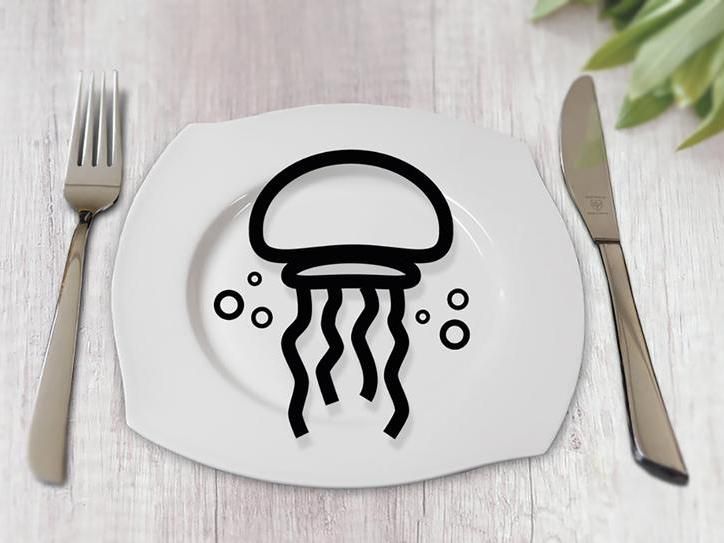Jellyfish: A delicacy
Advertisement
jellyfish have been a delicacy in Asian cuisine for centuries. A team of researchers led by Prof. Thomas Vilgis (Department of Prof. Kurt Kremer) of the Max Planck Institute for polymer research (MPI-P) has now investigated the precise processes of the traditional preparation method on a molecular level. In their research, they have also developed a new, as yet unused method of preparation based on the chemical-physical understanding of the gel-like structure of jellyfish.

MPI-P
Jellyfish are so-called invertebrates consisting of a jelly-like mass arranged between two layers enclosing this mass. Both the gel-like mass - the mesoglea - and the layers called epithelium are indigestible for humans in their natural form. A transformation, as it happens e.g. with other food by cooking or roasting, is not possible with jellyfish, because e.g. the cooking transforms the jellyfish only into a slimy mass, while drying it transforms it into a powder.
In an intensive scientific collaboration, Mie Thorborg Pedersen (University of Southern Denmark, Odense) and Thomas Vilgis (MPI-P) have now looked at the traditional Asian method of preparing jellyfish within the framework of polymer physics. Here, the jellyfish is placed for months in a salt mixture consisting of common salt (sodium chloride) and alum salt. This leads in the end to a crunchy texture of the jellyfish and transforms the actually inedible mesoglea into edible material. "Our research has shown that both salts are necessary," says Vilgis. "If we only use one, the preparation fails." The researchers attribute this to the interaction of the sodium and aluminium ions originating from the salts with the complex chemical structural proteins of the mesoglea. This consists mainly of the substances "collagen" and "elastin" known from cosmetics. Both are also present in the connective tissue (e.g. the skin). Vilgis: "We attribute the preparation method to the fact that aluminium is triple-charged, while sodium is only single-charged". The individual molecules of the jellyfish have to be bound together and stabilized by the salts during the pickle in order to obtain a stable and thus culinary "crunchy texture". This only works with large and multiply charged ions - the electromagnetic force and range of small or only single charged ions like sodium is not sufficient to create a stable bond.
Through the detailed investigation of the molecular structure of jellyfish, Vilgis and his team were also able to develop a new and faster preparation method that no longer requires several weeks of soaking - as is the case in Asian cuisine. The new method is based on an examination of the solubility of the individual chemical components of the jellyfish in different liquids. The jellyfish is no longer soaked in salt but treated with ethanol for a few days. In contrast to water, proteins of the jellyfish that are insoluble in water dissolve in ethanol. These so-called mucoproteins and polar polysaccharides (multiple sugars) form a large part of the jelly-like structure of the jellyfish. Dissolving them in alcohol results in an elastic, rubber-like gel. "From a gastronomic point of view, we expect this to give a very interesting mouthfeel," says Vilgis.
The new preparation method allows the jellyfish to be prepared within two days. After the drying and after the alcohol has completely evaporated, the texture changes from rubbery to crispy. At the molecular level, this is referred to as a "glass transition", as is the case with many polymer materials.
The results of the scientists were recently published in the renowned journal "International Journal of Gastronomy and Food Science".

























































